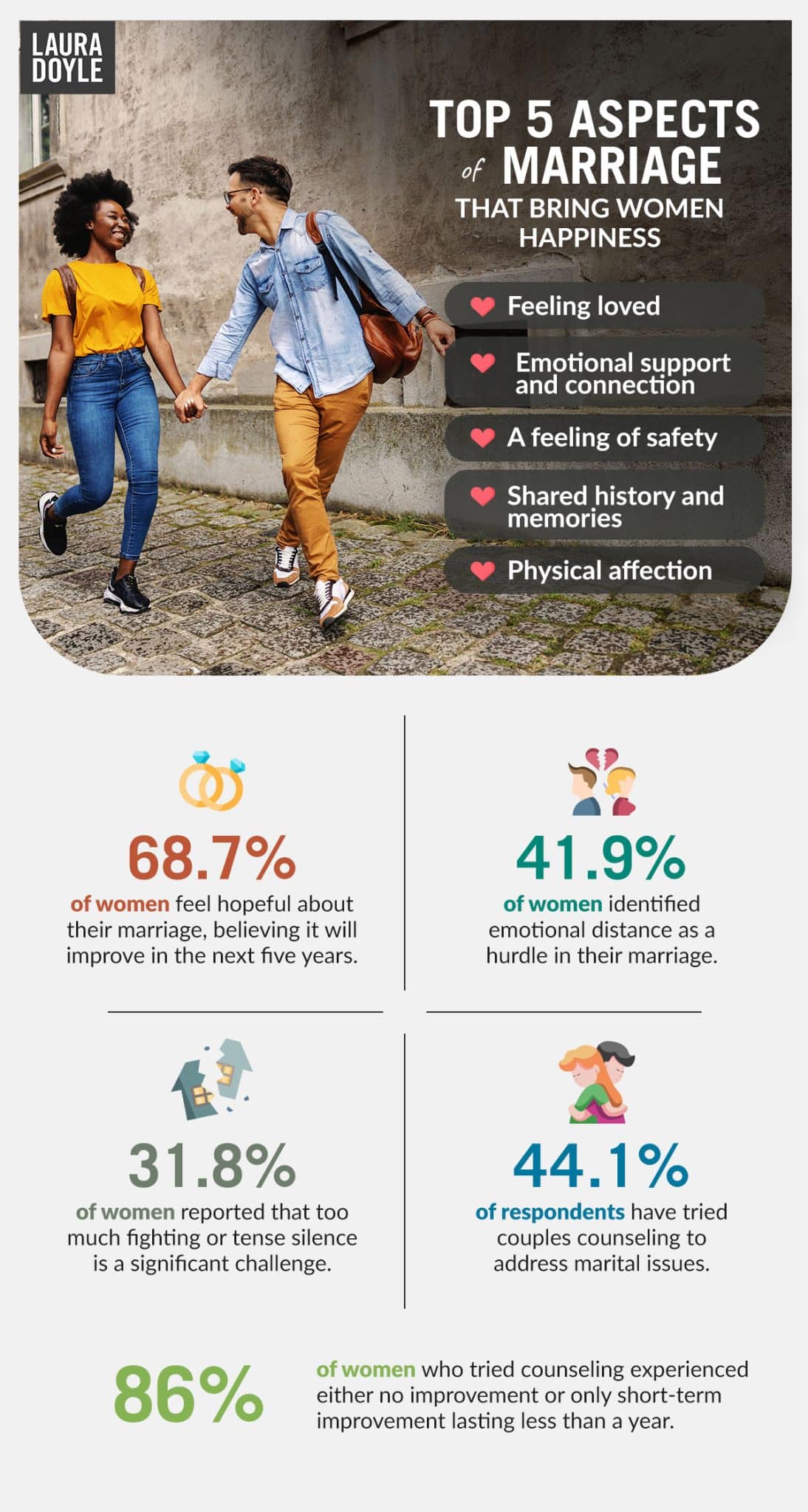2025 State of Marriage (An Industry Study)
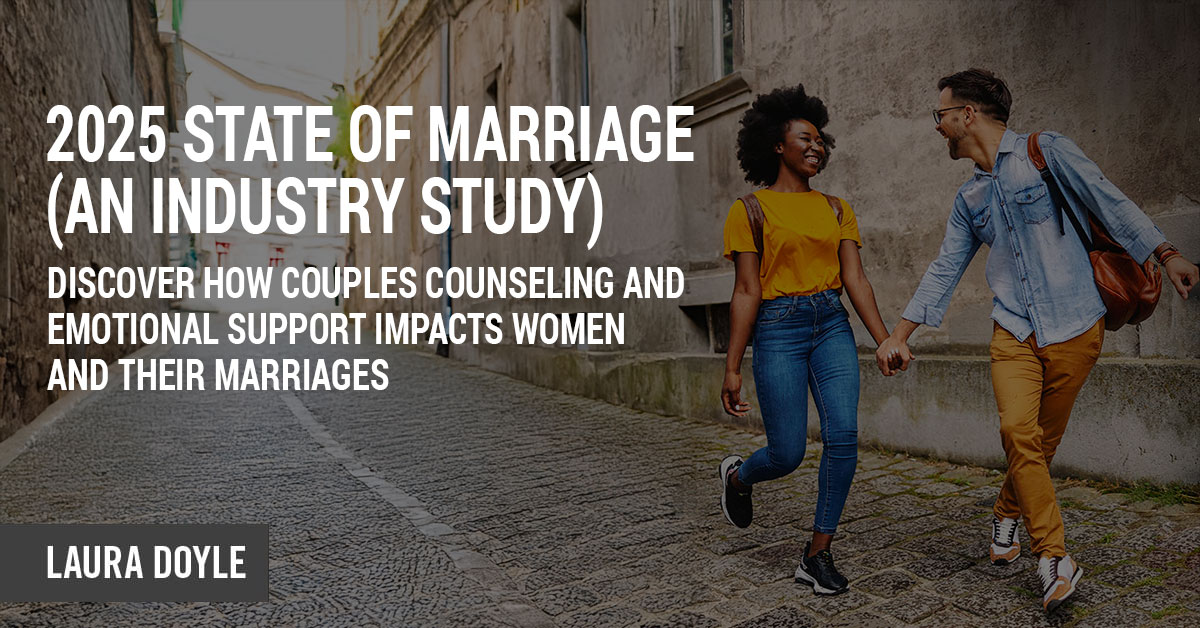
Contents
I. Introduction
A. Purpose of Laura Doyle’s Study
In this current era of fewer couples getting married and more single people subscribing to social media trends depicting traditional marriages as idyllic, oppressive, or altogether unnecessary, it has become increasingly important to evaluate the 2025 state of marriage.
Our study aims to identify the current marriage and divorce rates in the US and provide a comprehensive analysis of the factors contributing to general marital satisfaction and challenges faced among women.
By exploring key aspects such as sources of happiness, common hurdles, and the efficacy of counseling, our study aims to identify trends and insights that can help improve relationship dynamics in the long term.
B. Significance of the Findings
The findings of Laura Doyle’s 2025 Industry Study on the State of Marriage are significant as they challenge prevailing narratives around marriage. For example, the recent “trad wives” social media trend was met with a host of reactions, with many suggesting that these women weren’t satisfied in their marriages following traditional roles.
However, when it comes to “declining marriage satisfaction,” the industry study refutes this. Rather, the survey asserted that 68.7% of the female respondents (456 in total) felt hopeful about their marriages, believing they would improve in the next five years, thereby increasing their happiness scores. This was in direct contrast with the 8% of respondents (37) who predicted that their marriages would be in a worse state five years from now.
Ultimately, the majority of the findings emphasized hope and resilience amongst the female participants while simultaneously advocating for modern approaches that prioritize emotional intimacy and equality in marriages.
C. Methodology
The 2025 State of Marriage study used a survey-based methodology to collect data from approximately 600 women, capturing insights into their marital satisfaction, challenges, and outlook.
The respondents represented diverse marital statuses, relationship lengths, and demographic backgrounds, ensuring a comprehensive analysis.
The data collection emphasized both quantitative metrics, such as satisfaction scores and counseling success rates, and qualitative insights, such as emotional priorities and expectations between married couples for the future.
Based on the survey’s findings, the data collection revealed that respondents who had been married for longer typically reported higher happiness scores.
Moreover, the respondents (100% of which were women) asserted that the top five elements that brought them the most happiness were feelings of:
- love
- emotional support and connection
- safety
- shared history and memories
- physical affection
In this comprehensive guide, we will explore the data extracted from our industry study in greater detail.
From there, we will evaluate the respondents’ perspectives on their marriages, the biggest challenges they may face, the effects of counseling on the longevity of their marriages, and the perceived success rate of these marriages.
II. Key Findings at a Glance
Let’s begin by taking a closer look at the key findings from our industry study on the state of marriage in 2025.
A. Marital Status Distribution
During Laura Doyle’s study, 568 respondents indicated that they were married, while 71 respondents indicated that they were unmarried.
Of this initial group, 53 respondents had been married for less than three years, while 129 respondents had been married between 19-25 years.
B. Effectiveness of Marriage Counseling Over Time
The majority (67%) of the survey respondents who had tried couples counseling revealed that there was no improvement in their marriage as a result of the counseling. Another 19% said that improvements from marriage counseling lasted for less than a year. A combined total of 86% reported that marriage counseling did not result in a lasting improvement in their marriage.
55% of respondents had been to individual counseling for their marriage, and of those, 40% saw no improvement in their marriage. An additional 27% of those who sought individual counseling for their marriage said the improvements lasted less than a year. A combined total of 82% found no lasting improvement from individual counseling for their marriage either.
For instance, a range of 142-200 saw no improvement in the state of their marriages after either form of counseling. In comparison, only a small range of 5-30 respondents saw any long-term, positive changes in their marriage while undergoing both forms of counseling after 10 years or more.
C. Happiness Ratings in Marriages
After extracting data from our study, the outcomes showed that the average happiness scores ranged from 25 respondents giving the lowest rating of 2 out of 10.
In contrast, a whopping 116 respondents gave their marriages a score of 7 out of 10, which was the highest happiness rating overall.
III. Sources of Happiness in Marriages
Laura Doyle’s industry study revealed several happiness sources in marriages that were evaluated at great length.
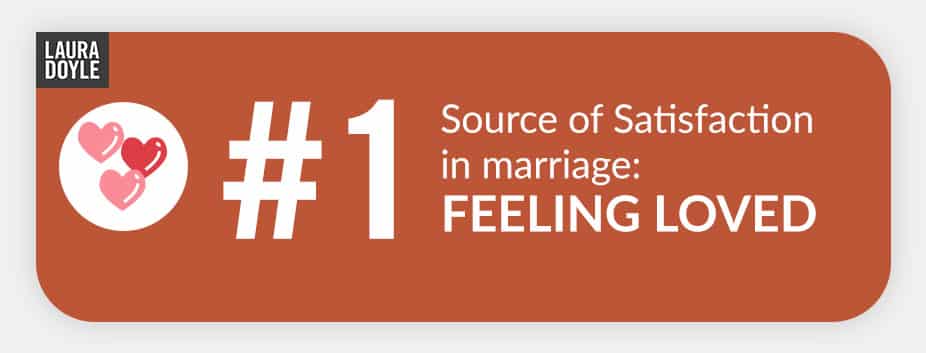
A. Emotional Support
414 respondents asserted that emotional connection and support brought them the most amount of happiness in marriage.
This was the second highest factor that positively affected the happiness score in these marriages. It was ranked just below feeling loved, which was rated highly by 432 respondents.
B. Physical Intimacy
Based on the results of our studies, 305 respondents rated physical intimacy as a high contributor to happiness in their marriages.
With that said, more respondents (334 in total) rated physical affection ahead of physical intimacy. This in itself was an interesting outcome, as the two factors are often mistakenly treated as interchangeable.
In this context, physical intimacy typically denotes sensual touches or proximity to one’s partner. Conversely, a study undertaken by Andrew K. Gulledge et al. on Brigham Young college students in 2004 asserted that physical affection related more to the notion of giving or receiving sensual touches or proximity to evoke feelings of love in one’s partner.
While physical intimacy contributes significantly to marital happiness, the industry study revealed that physical affection holds even greater value for many couples.
This distinction emphasizes the importance of small, loving gestures in nurturing emotional bonds and deepening connections to strengthen the bonds of marriage.
C. Shared Memories
Our study noted that a range of at least 251-329 respondents valued shared experiences highly – such as sharing meals, time, ideas, cultures, viewpoints, as well as history and memories.
Shared memories and experiences are a cornerstone of marital happiness, with 336 respondents highlighting the joy of a shared history. Simple activities like sharing meals and quality time (329 respondents) strengthen bonds, while 251 respondents emphasized the value of exchanging ideas, cultures, and viewpoints.
Having shared experiences like this in a long-term relationship aids in creating a sense of unity and belonging, as well as fostering deeper emotional connections.
By building and cherishing these moments, married couples can lay a foundation of mutual understanding and fulfillment that sustains their relationship over time.
IV. Challenges Facing Modern Marriages
Aside from the happiness sources received in these relationships, the survey participants also experienced several challenges in their modern marriages.
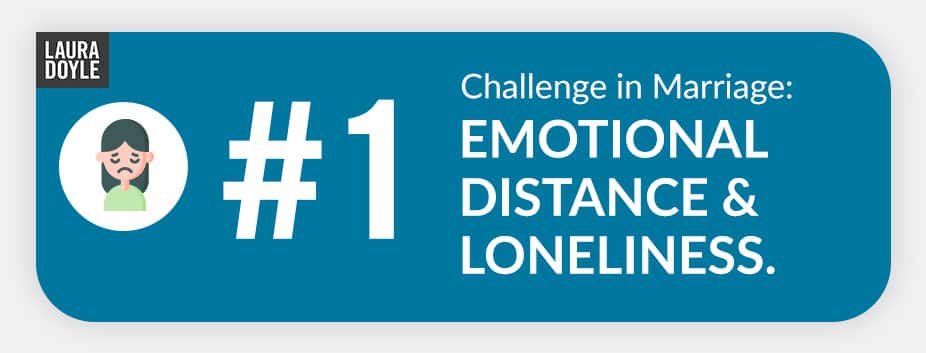
A. Most Cited Challenges
Our study found approximately 41.9% of women highlighted emotional distance and loneliness as a significant hurdle in their marriage.
Moreover, roughly 31.8% of women stated that fighting too much too often or tense silences following said arguments was another significant challenge in their relationships.
B. Differences by Relationship Duration
Our findings showed that there is a significant difference in the problems faced by younger and older married couples.
In an article written by Michelle Horton, she cited that one of the most common challenges faced by young married couples was financial stress and hardship. In the survey findings, 35 respondents asserted that financial issues were the single biggest challenge in their relationship.
In contrast, the National Institutes of Health reported that some of the most common marital issues for older people related to a decline in physical or mental health as well as increases in conflict over time.
In the survey findings, it was revealed that 80 respondents cited too much fighting and silent tension as the biggest struggle in their marriage. One of the female respondents, in turn, reported that physical abuse was a critical factor in her struggling relationship.
Moreover, 22 survey participants reported emotional or psychological turmoil as the number one contributor to the challenges in their marriages.
As we’ve seen, the challenges in modern marriages evolve with time. Younger couples often grapple with financial stress, while older couples generally face more health-related struggles and heightened conflict.
Across all stages, emotional turmoil and silent tension highlight the need for techniques to reconnect.
C. Implications of Challenges
Numerous cultural or social factors caused stress and influenced these marriages, according to Laura Doyle’s industry study.
Based on the survey’s findings, 41 respondents cited financial issues as the biggest challenge in their marriage.
Additionally, 37 respondents reported that housework imbalance was a critical hindrance in their marriage, which can be linked back to the transition away from traditional gender roles in society.
Finally, 23 respondents cited a midlife crisis as a critical challenge in their marriages. According to a study done by Ulrich Beck and Elisabeth Beck-Gernsheim, a midlife crisis is essentially an “adolescent pursuit of identity.”
Drawing from our experience, this label reflects a sudden drive to create meaning out of one’s perceived mortality and the desire to live to the fullest, which could explain a sudden shift away from previously held values.
Moreover, it puts an evident strain on the “shared life” sequence, which typically exists between two people in a marriage and can lead to increased divorce rates in certain circumstances.
V. Counseling Trends and Their Effectiveness
Let’s take a closer look at what the industry study revealed about the effects of counseling on the marriages of the various respondents.
A. Adoption of Counseling
Overall, 337 of the respondents (84%) out of 400 engaged in couples counseling, whereas 352 respondents out of 400 (88%) participated in individual counseling.
B. Perceived Success Rates
There was a noticeable difference in the short-term vs. long-term improvements from counseling for the aforementioned survey participants.
A range of 60-100 respondents saw only short-term impact from counseling on their marriages, with any positive results lasting less than a year.
Conversely, the range of married couples who enjoyed the positive benefits of couples therapy and individual counseling after 10 years and more in the long term was only 5-30 respondents.
Overall, these latter survey findings indicated that roughly 86% of women who tried couples counseling experienced either no improvement or only short-term improvement lasting less than a year in their marriages. 67% of the female respondents who tried individual counseling also saw no improvement or short-term improvement lasting less than a year.
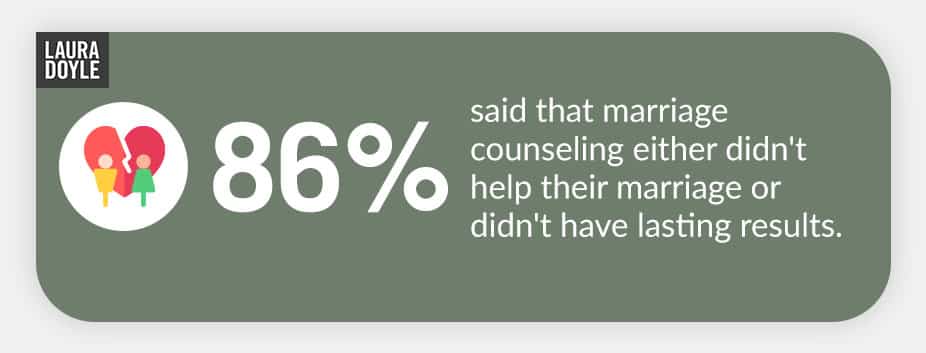
C. Analysis of Counseling’s Role in Relationship Health
Even though 44.1% of women underwent counseling to improve their marriages, the survey’s findings revealed that 80% of the female respondents who underwent couples counseling and 95% of the women who attended individual counseling didn’t see any improvements in their marriages after undergoing both forms of counseling.
Laura Doyle’s industry study highlighted the need for more personalized, long-term approaches to address deep-seated relationship issues, thereby encouraging married couples to actively apply solutions like the Six Intimacy SkillsTM for lasting results in their marriages.
VI. Contrasting Narratives
Next, we will evaluate the correlation between the Trad Wives Movement prevalent on social media versus the insights derived from the industry survey.
A. Trad Wives Movement vs. Data Insights
The traditional wife, or “trad wife,” is a movement popularized by TikTok and other social media platforms. In layman’s terms, the Trad Wife Movement calls for modern women to return to traditional gender roles in which a wife is a homemaker and carer of her children while her husband is the sole income provider within the family unit.
The notion behind this lifestyle is that a “trad wife” can garner more happiness and fulfillment by removing herself from the daily stresses experienced by the modern working woman. She achieves this by staying at home and caring for her family, leaving her husband to care for her financial needs instead.
As such, the survey showed that nearly 300 respondents highly valued getting support with responsibilities of financial support and problem-solving. This potentially supports the findings of increased happiness and decreased divorce rates for women who subscribed to the “trad wife” culture.
VII. Future Outlook for Marriages
Next, we’ll look at how the sentiments of the survey respondents predicted the outcome of their marriages over five years.
A. Sentiments on the Next Five Years
456 respondents felt optimistic that their marriages would be better five years from now. On the other hand, 114 respondents predicted that their marriages would remain in the same condition as they are now after five years.
These numbers are encouraging in comparison to the 37 respondents who pessimistically felt their marriages would decline in the next five years, while 64 respondents foresaw that their marriages would end in divorce five years from now.
In short, the survey revealed a predominantly optimistic outlook for marriages, with most respondents believing their relationships would improve over the next five years.
While some participants foresaw challenges or divorce, the overall sentiment highlighted hope and potential for growth in marital bonds.
B. Societal Implications
The outlook of the survey participants on their marriages could indicate underlying societal factors that have potentially affected the marriage and divorce rates in the US over time.
According to an article done by Clayton Buck et al in 2024, the marriage rate in the US in 2022 was 16.7%, while divorce rates in the same year across state lines was a mere 7.1%.
With that said, the United States Census Bureau ascertained that the marriage rate in the US has been steadily declining since 2016. One of the reasons they gave for this is that more couples were choosing not to get married, despite specific factors such as getting pregnant before getting married.
With many couples opting for long-term relationships over marriage, this could reflect relationship dissatisfaction due to an increased lack of intimacy skills and evolving attitudes toward family dynamics.
C. Recommendations for Enhancing Relationship Satisfaction
Despite certain societal implications, our survey’s overall findings offer several practical takeaways for couples and policymakers.
It is important to note that Laura Doyle’s survey revealed that the top five aspects of marriage that brought the female participants happiness weren’t related to material things such as money or elevated social status.
Instead, the top five contributors to happier marriages were feelings of love, emotional support and connection, safety, shared history and memories, and physical affection. We discovered that these top five elements identified in the industry study correlated with The Six Intimacy Skills™ created by Laura Doyle.
Some of these skills (such as having fun, receiving affection, and expressing playfulness, gratitude, and desires) highlighted by Doyle in her book “The Empowered Wife” are directly related to the notions of experiencing feelings of love and physical affection in a marriage, as illustrated by the survey.
To enhance relationship satisfaction, couples should prioritize emotional connection, safety, and affection—key factors driving happiness in marriages. Policymakers can support this by promoting initiatives in the form of marital coaching that strengthen these core aspects beyond material gains.
VIII. Conclusion
A. Summary of Key Takeaways
Some of the key takeaways from Laura Doyle’s 2025 State of Marriage industry study relate to specific challenges in marriages, how the survey participants attempted to resolve these challenges, and their overall outlook on their marriages in the future.
- We found that 41.9% of women viewed emotional distance and loneliness as critical factors negatively affecting their marriages. Based on these findings, we also noted that 44.1% of the survey participants utilized couples counseling to address marital issues such as this. With that said, we discovered that 80-95% of the female respondents ultimately felt that counseling was ineffective. This could indicate that alternative marriage support, such as that of a certified relationship coach, is necessary for healing a marriage in the long term.
- Overall, the survey revealed that despite the numerous challenges facing many modern marriages, 68.7% of the respondents still felt optimistic about the likelihood of their marriages not only surviving but thriving five years after the completion of the initial Laura Doyle industry study.
- Respondents from the survey findings who remained optimistic about the future of their marriages can benefit greatly from utilizing marital coaching and support in the form of The Six Intimacy Skills™ by Laura Doyle.
- Together, she and her numerous trained and certified marriage coaches can offer their experience and support to women in struggling marriages – helping them see a brighter day together with their partners.
Ready to transform your marriage? Discover The Six Intimacy Skills™ and get expert support from certified coaches to create a brighter, more connected future with your partner.
Learn more today with us at Laura Doyle!
